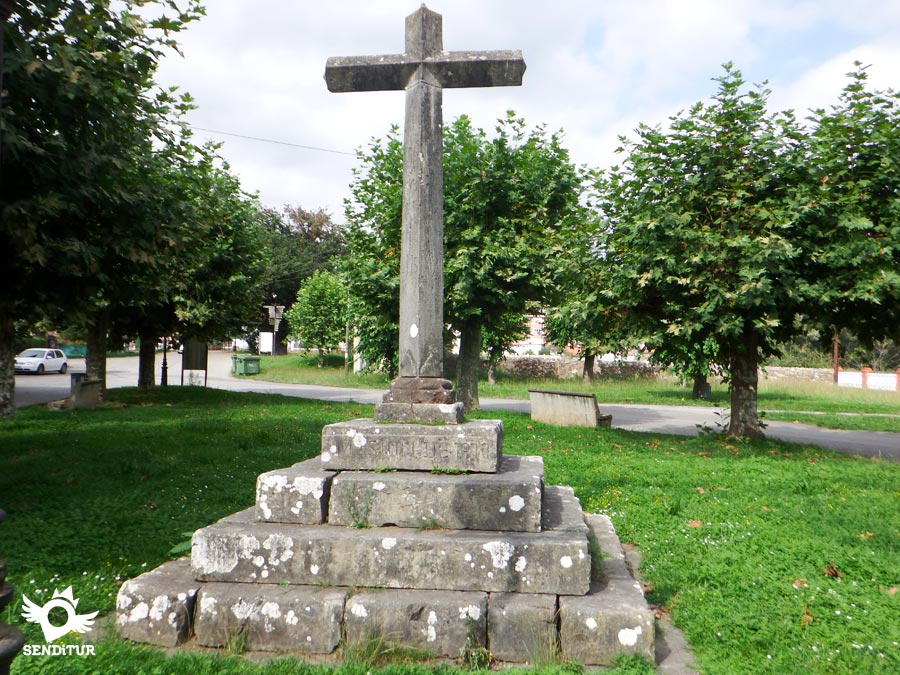On the Primitive Way, it sits on the plain formed by the Nonaya river at its mouth in the Narcea. It is a village that belongs to the parish of the same name of the council of Salas. Cornellana, Curniana in Asturian, although its name seems to derive from the Roman name of Cornelius and later it was known by Corneliana, according to documents of the year 897, it originated and grew around the initial nucleus of the Monastery of San Salvador de Cornellana that during the Middle Ages was one of the most important monastic centers of Asturias. In the nineteenth century with the Napoleonic invasion, Cornellana saw how his monastery was used for stables and then when the French retreated burned it. In 1827 the town of Cornellana became part of the Town Hall of Salas. In 1835 the monastery's outbuildings passed into the hands of private individuals and its temple became the parish church of the locality under the title of Saint John the Baptist.

The river Nonaya and the Narcea draw a beautiful landscape and invite you to take a good walk along their paths in order to discover hidden and beautiful corners. Cornellana's main street, Avenue Fernandez Pello, extends through the town leaving in the atmosphere pleasant gastronomic aromas that awaken the senses. In Cornellana you can see and visit the historic and grandiose Monastery of San Salvador that was founded, according to documents, in the year 1024 by the Infanta Cristina, daughter of King Bermudo II of Leon. When the Infanta died, the monastery was fragmented among its heirs until Count Suero Bermúdez and his wife Enderquina unified it again, the monastery and all its properties even gained greatness. Lacking descendants, in the year 1122 it was ceded to the monks of Cluny, thus becoming a Benedictine monastery. A few years later, Alfonso VII granted this monastic institution a jurisdictional preserve. The monastery was reformed during the Baroque period. The church converted into a parish church and dedicated to San Juan is Romanesque in style, 12th century, and possibly the tower at the head of the church is the oldest element. From this same period is the famous Door of the Osa.

Cornellana celebrates the 24th of June in honour of San Juan and the 15th of August celebrates Nuestra Señora.
Cornellana, a salmon farming town par excellence, celebrates at the end of April the traditional ASTURPESCA Y SUBASTA DEL CAMPANU DE ASTURIAS-CAPENASTUR fair "Feria de la Caza, la Pesca, la Naturaleza y el Turismo activo" (Hunting, Fishing, Nature and Active Tourism Fair). This event coincides with the start of the salmon fishing season. The Campanu del Narcea is also auctioned, which is the first salmon to be caught and validated, with a seal, in the official centres set up for this purpose.

Close to the Monastery of San Salvador, in the surroundings of the Nonaya river, there is a centennial oak that is said to be older than the renowned and extinct carbayón vetustense.
Cornellana can be reached via the N-634 road that links it with Grado and Salas and crosses it from one side of the town to the other. We can also do this by following the AS-15, which runs along the course of the Narcea River until it reaches Cornellana, or by the AS-16, which goes up to here, ascending it from its mouth into the Nalón River.
Cornellana has a daily bus service that connects it with Oviedo, Cangas del Narcea, Pola de Allande, Tineo... and has a stop in the village.
The nearest RENFE station to Cornellana is in the council of Grado. The nearest FEVE station is in Pravia council.
SENDITUR is not responsible for any variation in the information described, as well as for the misuse of its guides and recommends that everyone be responsible and prudent in carrying out the activity. Likewise, we invite you to document yourself with books and specialized guides to complement the information described. From the commitment of SENDITUR with Nature and the respect to the balance of the environment, SENDITUR urges you to travel in a responsible way, with low environmental impact and respecting at all times the Natural, Cultural and Social environment wherever you go. For any suggestion, SENDITUR invites you to send an email to
Continue watching …